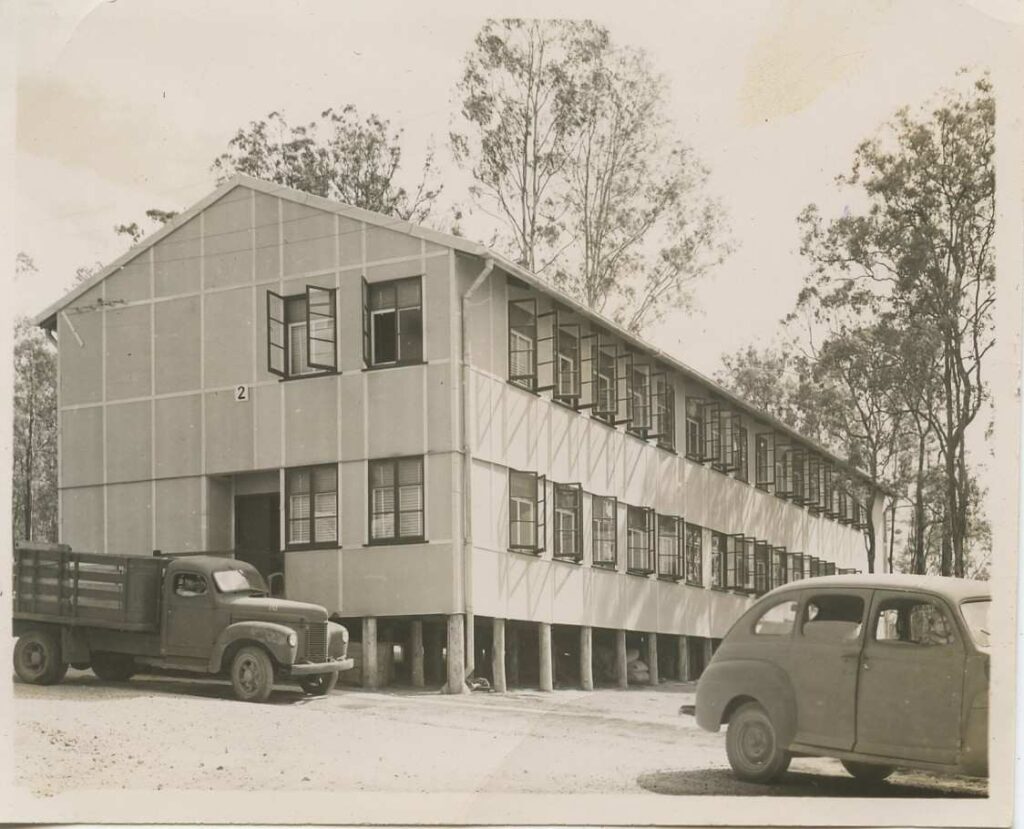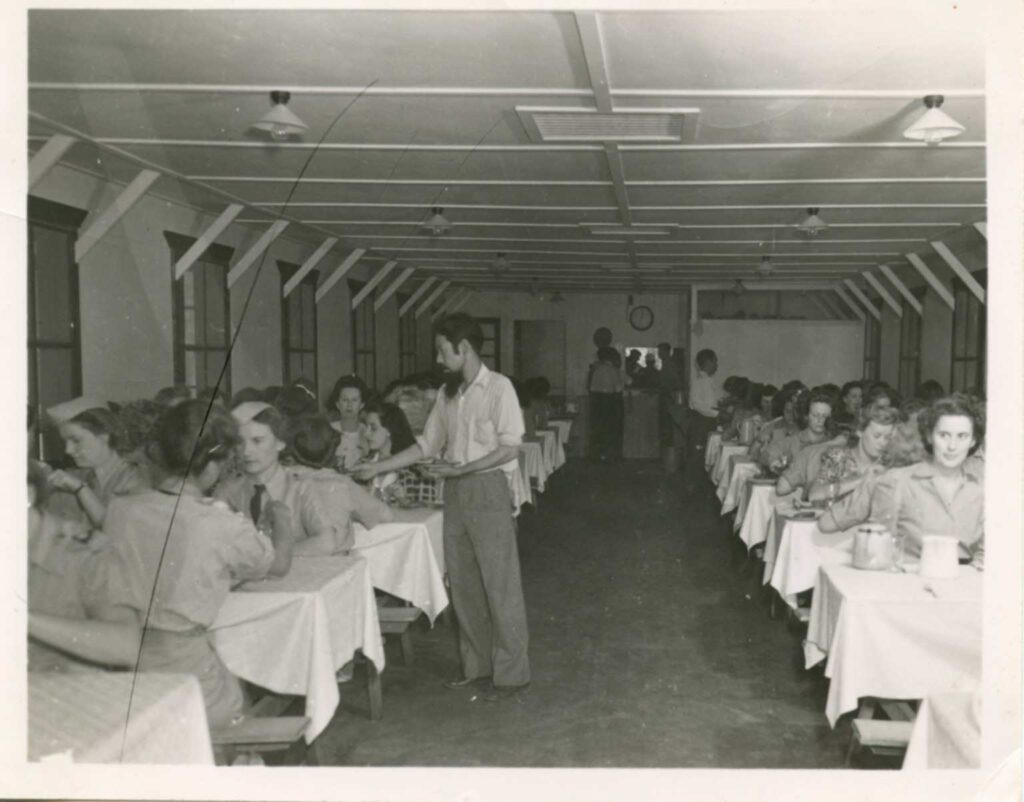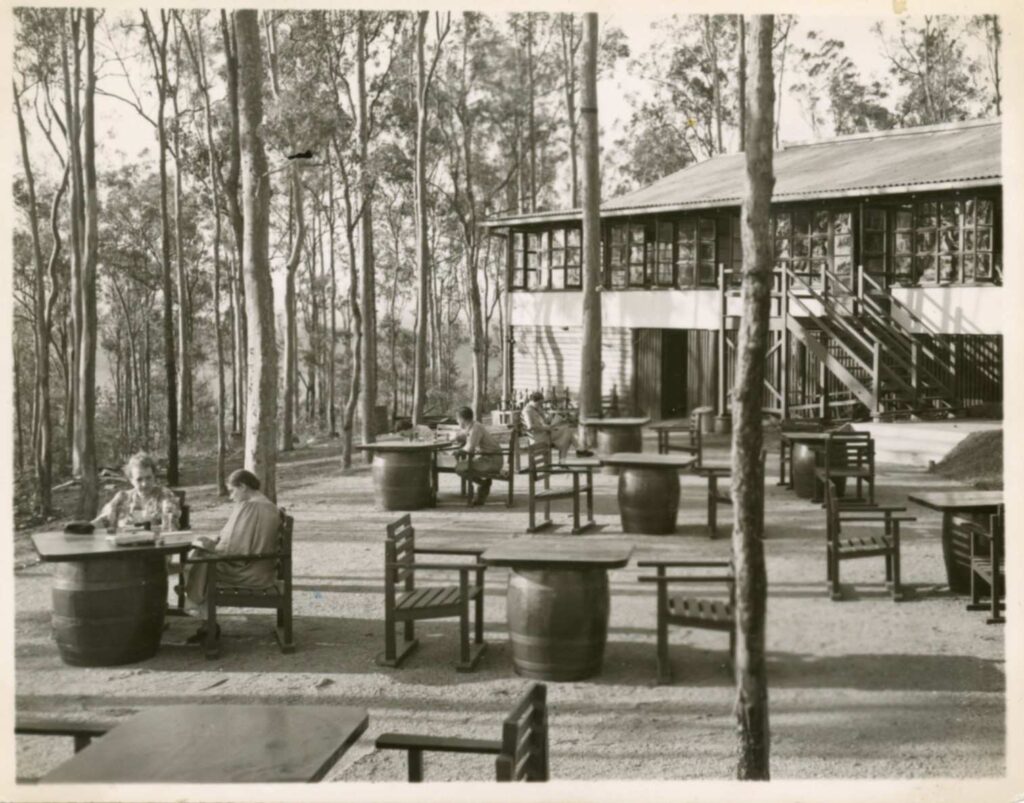Memories of Camp Columbia: Jan Staal’s account of 1945
The memoirs of Colonel Jan Staal (Royal Netherlands Air Force, retired), who had earlier served as a captain-pilot-observer with the Military Aviation of the Netherlands East Indies (ML-KNIL), offer a rare first-hand account of Camp Columbia in Brisbane at the close of the Second World War. His recollections provide insight into the Dutch military presence in Australia, the uneasy co-existence between government officials and military officers, and the mounting uncertainty as the war drew to its end.
Arrival at Camp Columbia
In September 1944, after completing his operational flying duties with the 18th Squadron in Darwin, Staal was ordered to report to Colonel Simon Spoor, then director of the Netherlands East Indies Forces Intelligence Service (NEFIS). Spoor was based at Camp Columbia, a large Allied camp west of Brisbane. Staal, who had been taught by Spoor years earlier at the Royal Military Academy, was tasked with helping to build up Dutch military intelligence.
Camp Columbia, as Staal describes it, was a divided place. On one side were the government departments of the Netherlands East Indies in exile, led by Lieutenant-Governor Hubertus van Mook and senior officials such as Van der Plas, Kersten, Hoogstraten, Blom, Smit and Warners. On the other side were the military offices, including NEFIS under Spoor, which operated under MacArthur’s supreme command. The two sides, civilian and military, worked largely in isolation, with little communication or coordination.
Intelligence and Manila mission
Staal’s early task was to organise the intelligence system at Camp Columbia. Once established, Spoor sent him on a mission to Manila in April 1945, to learn from American and Filipino experience in post-occupation governance. There he observed the challenges of restoring order after Japanese withdrawal: guerrilla bands, collaborators, communists, and a desperate need for a functioning police apparatus. His report warned that the Netherlands East Indies would face similar turmoil unless a strong and immediate plan was put in place. Spoor took these warnings seriously and presented them at Camp Columbia, but most civilian officials dismissed them as overly pessimistic.
A divided camp
Staal paints a picture of Camp Columbia as a community filled with tension and misplaced optimism. Civilian leaders, including Van Mook, clung to the belief that the return to Java would be orderly and welcomed by the local population. Government directors cited trivial indicators such as trams running in Batavia as proof that the situation would be stable. Spoor and his military colleagues, by contrast, saw danger looming. They understood that chaos, violence and political upheaval were likely once the Japanese capitulated.
The split between the government and the military was emblematic of the larger Dutch presence in Australia. Civilian officials lived relatively comfortably in the American-built facilities at Camp Columbia and tended toward complacency. The military side, working under NEFIS and the broader Allied command, perceived a gathering storm.
Below various pictures of Camp Columbia during the period of the Netherlands East Indisch Government-in-Exile



The looming crisis
By August 1945, with the sudden Japanese surrender, the atmosphere at Camp Columbia turned restless. Many Dutch officials and servicemen were desperate to return to Java, but there were still no clear orders from London or Batavia. The installation became chaotic, “like a headless chicken,” in Staal’s words. Plans were hastily drawn up for Dutch units to return to the Indies, but even as preparations were made, the reality of Indonesian nationalist declarations and the solidarity of Australian trade unions with Sukarno’s cause complicated the process.
When Australian dockworkers refused to load Dutch ships, Camp Columbia became a place of anger and frustration. Van Mook’s hesitant speeches and poor English inflamed tempers rather than calming them. At one point, union resistance forced Dutch officials to consider paying off the strikers simply to get their supplies moving again.
From aviator to policeman
In the absence of functioning civilian authority, Spoor and General Van Straten turned to Staal with an unusual task: to train a new military police force. Using materials he had gathered in Manila, he was instructed to prepare air force personnel to serve as police officers to accompany the KNIL companies returning to Java. Within days, a makeshift military police school was established in Melbourne, staffed largely by former pilots and aircrew.
Staal was appointed Commissioner of Police 1st Class. By mid-September 1945, he and his men were on their way back to Java. Yet his time at Camp Columbia, and the tensions he had witnessed there, had left a lasting impression.
Reflections on Camp Columbia
For Staal, Camp Columbia embodied the contradictions of Dutch exile in Australia. On the one hand it provided a safe haven, a base of operations, and the facilities to maintain Dutch government and military structures. On the other hand, it revealed the deep divisions between civilian leaders and the military, between optimism and realism, and between Dutch expectations and Australian political realities.
The camp also became a stage where international politics played out locally. The Dutch were guests in Australia, subject to Australian attitudes and limitations. They lived under the authority of MacArthur’s command while also trying to assert their own claims to the future of the Netherlands East Indies. The camp’s luxury, its bureaucracy, and its lack of decisive leadership all became symbols of the Dutch predicament in 1945.
Conclusion
Through Staal’s eyes, Camp Columbia appears not as a simple Allied staging ground but as a microcosm of Dutch wartime exile: hopeful yet divided, ambitious yet constrained, and ultimately caught between Allied strategy and Indonesian nationalism. His memories remind us that Brisbane, far from the battlefields of Java or Sumatra, was nonetheless a decisive place where the future of the Indies — and the limits of Dutch power — were being shaped.
This publication is part of the archive of Pieter Boele van Hensbroek (kept by the DACC)
